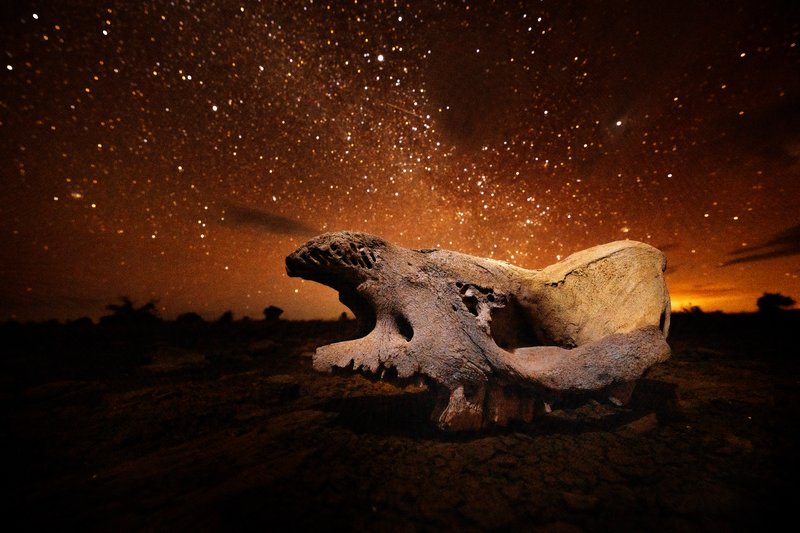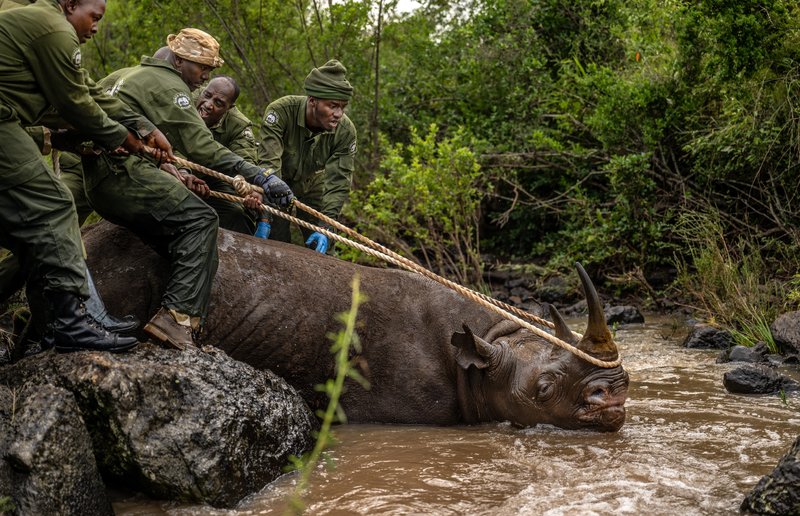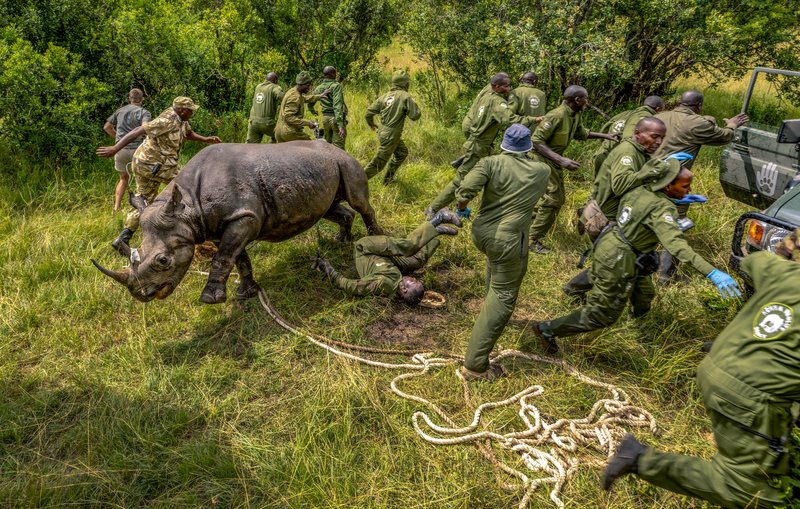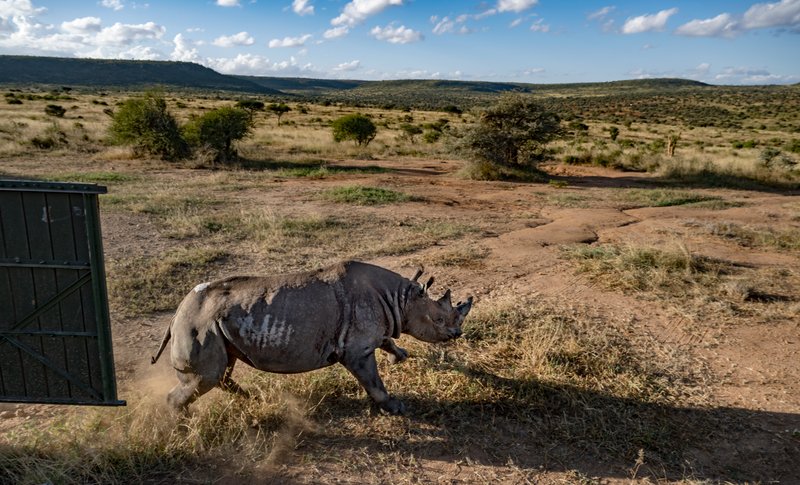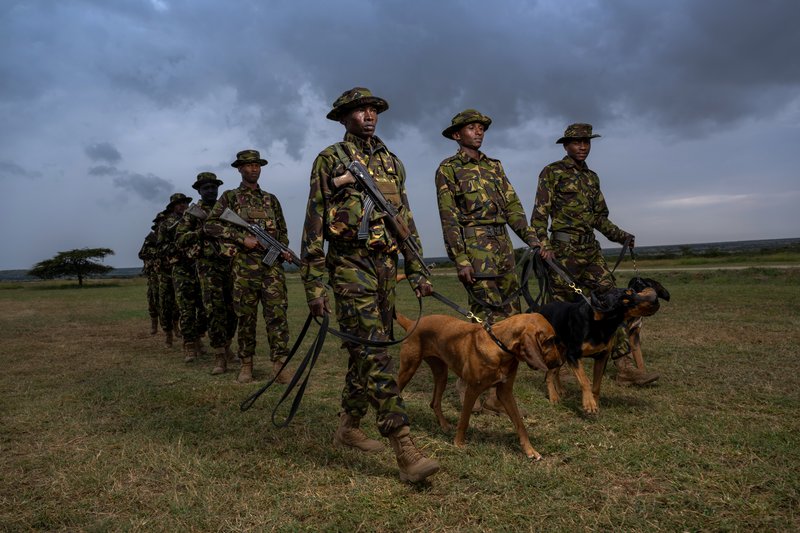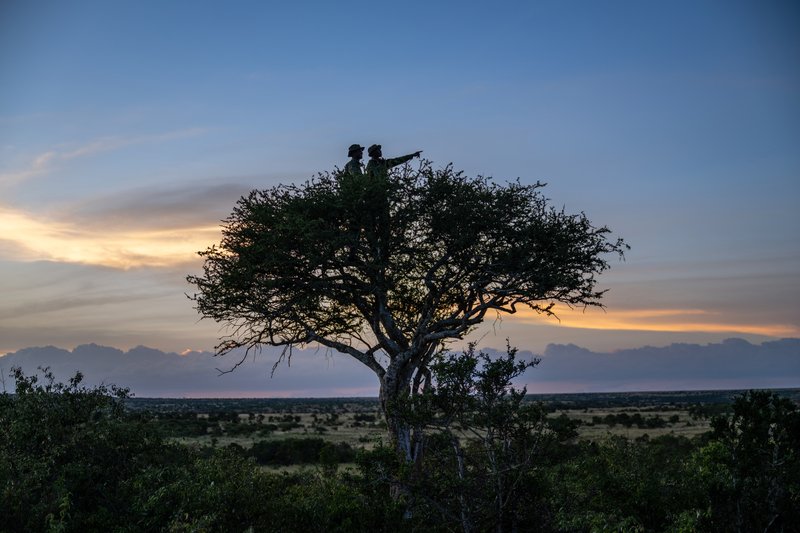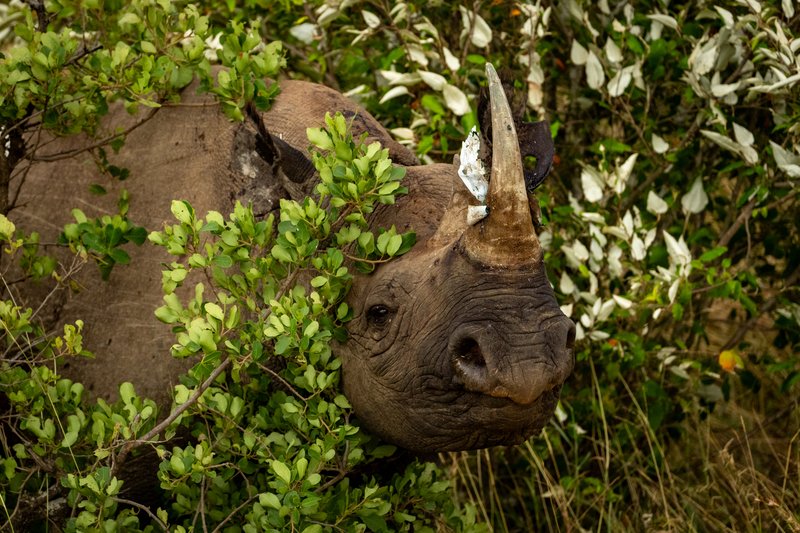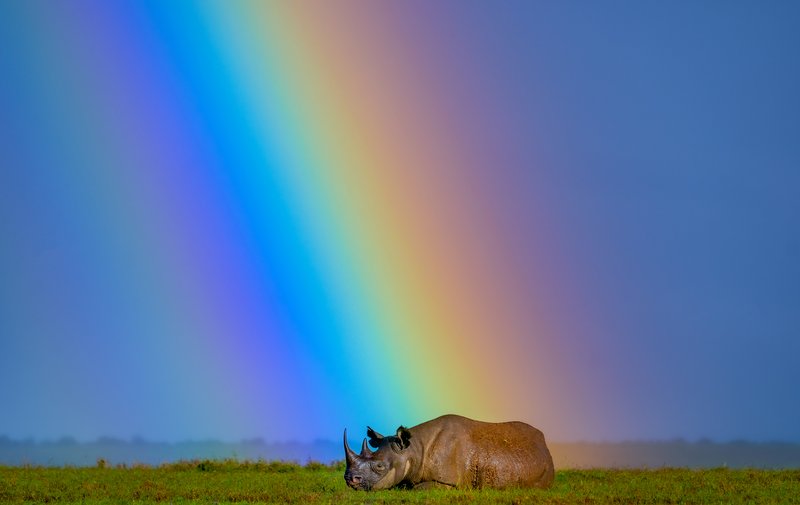First Place: Kenya's Black Rhino Revival
Kenya's Black Rhino Revival
The Kenya Wildlife Service team quickly springs into action to save a rhino's life after it stopped breathing at Ol Pejeta Conservancy in Laikipia, January 20, 2024. (KWS) successfully translocated 21 eastern black rhinos to Loisaba conservancy, which hasn't seen rhinos for 50 years due to poaching. The operation not only underscores Kenya's conservation triumph but also signifies a critical step in achieving stable habitats for the survival of the species. Wrangling so many tons of muscle and sharp horns was not without incident. The Kenya Wildlife Service (KWS) team quickly sprang into action to save a rhino's life after she reacted badly to the anesthesia and stopped breathing at Ol Pejeta Conservancy in Laikipia on January 20, 2024. The task of managing such a large and powerful creature is inherently fraught with risks and demands extraordinary expertise. Rhinos are formidable animals, characterized by their immense size and strength, as well as their potentially dangerous horns. When an emergency occurs during sedation, it requires more than just bravery—it demands precise knowledge and skill. The KWS team's response was a demonstration of their extensive training and experience in wildlife conservation and emergency veterinary care. Recognizing the gravity of the situation, they immediately began implementing critical resuscitation techniques specifically designed for large mammals. This involved assessing the rhino's vital signs and quickly administering reversal agents to counteract the effects of the anesthesia that had compromised her breathing.
Ami Vitale
